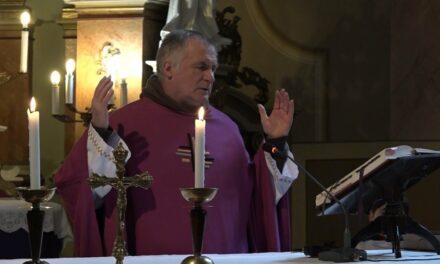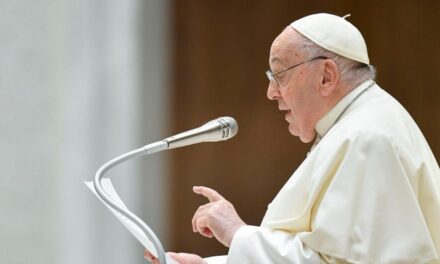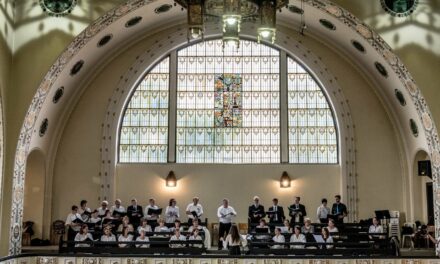St. István was the first in the line of our kings from the Árpád House, who was inaugurated and crowned king according to the rite of Western, that is, Latin Christianity. And he was also the one who placed great emphasis on the fulfillment of the Christian spirituality of his people, which he chose to support pilgrimage routes as one of the ways.
Already in the first years of his reign, he founded pilgrimage houses for Hungarians in several places, such as the ones in Ravenna, Rome, Constantinople and Jerusalem.
The Jerusalem one received pilgrims coming to the Holy Sepulcher and Golgotha, while the Roman one received those coming to the center of Western Christianity, those who made a pilgrimage to St. Peter's Cathedral, to the tomb of the "prince of the apostles".According to the records, even Prince Álmos visited the Saint István Pilgrimage House in Jerusalem during his pilgrimage between 1107 and 1108. It is probably thanks to him that within a short time Hungarian hermits moved to the Jozafát valley near the city.
At this time, the leadership of this hermit community and the Hungarian pilgrims coming to the city was managed by Archdeacon Simeon of Hungarian origin. The further construction of the Jerusalem pilgrimage house in 1135 is attributed to a Hungarian noblewoman named Petronilla.
This house is on Via Dolorosa III. station, Petronilla purchased the building from the canons of the Holy Sepulcher for 400 Byzantine gold, according to the Hungarian Catholic Lexicon. III. Our king Béla increased the house with estates, which III. Pope Orbán confirmed.
In Arab times, the building lost its function, although it was mentioned in the "Frankorum Historia" in 1444 in connection with the pilgrimage routes through Hungary. Then in 1857, the Hungarians could take it over again, albeit within the political framework of the Austro-Hungarian Monarchy. Its leader at that time was the Archbishop of Vienna. The Via Dolorosa III. its station is located in the Arab quarter of the Old Town, not far from the so-called lion gate, through which we can go up to the Mount of Olives and the Garden of Gethsemane.
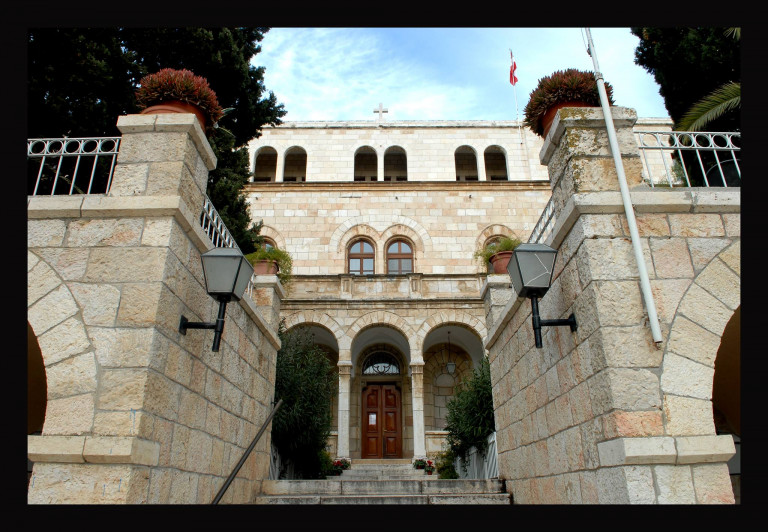
Photo: Austrian Hospice
In 1939, the British occupied it, and its residents, rector and sisters were interned. From 1937, the rector was Dr. József Ijjas, who later became the archbishop. Between 1948 and 1967, Jordan owned the area and operated the building as a hospital. The so-called 1967 It was occupied by Israel during the "Six-Day War", and the building was also used as a hospital, but it was finally handed over to the Austrian Catholic Church in 1985.
With its current name – Szent Család Austrian Hospice – unfortunately, it no longer reminds us of the thousand-year Hungarian past of the institution, despite this, it is the venue for numerous Hungarian lectures, events and exhibitions. In July 2012, for example, President János Áder and then in January 2013 Deputy Prime Minister Zsolt Semjén visited the house as guests.
The Hungarian Pilgrim House in Rome was also built by Saint István for Hungarian pilgrims coming to the capital of the Western Church. This journey took twenty days in the 11th century and was not without danger, so when the pilgrims finally reached Rome, the Eternal City, they needed rest.The importance of the Roman pilgrimage house lay in the optimal choice of location: it was located in close proximity to the southern side of St. Peter's Basilica; at that time, the bones of the martyr St. Stephen also rested in the basilica. (Nowadays, it has been moved to the Basilica of San Lorenzo fuori le Mura, next to the sarcophagus that keeps some of the relics of St. Lawrence.)
The "hospital" built next to the basilica was therefore suitable for rest and catering for pilgrims until the middle of the 18th century, i.e. for more than 700 years.
Although St. Peter's Basilica did not reach its current dimensions, it stood out among the surrounding churches with its prestige and size. It was its "little brother" next to the south side of the basilica - certainly - III. The ancient Santo Stefano (Stefanino) church was also built in 752 during the reign of Pope Stephen, which 250 years later - who returned the Holy Crown to Hungary - II. Pope Sylvester offered it to Géza's son, Vajka, that is, King Saint István. This became the church part of the later Hungarian pilgrim house.
The Field of Mars, where, according to Christian legend, St. Peter was crucified, was once located in this area, and Nero's circus was also here, but by this time the traveler could only see the ruins of all of them. Recent excavations have also found ancient Roman tombs, so under the former Stefanino - as well as under the other churches here - were the famous Christian catacomb-labyrinths that hid the tombs of hundreds of Christians and St. Peter.The Pilgrimage House of Hungarians Szent István was one of the largest accommodations at the time, because it was able to accommodate 12 canons at the same time, together with their entire entourage, luggage, and pack and draft horses.
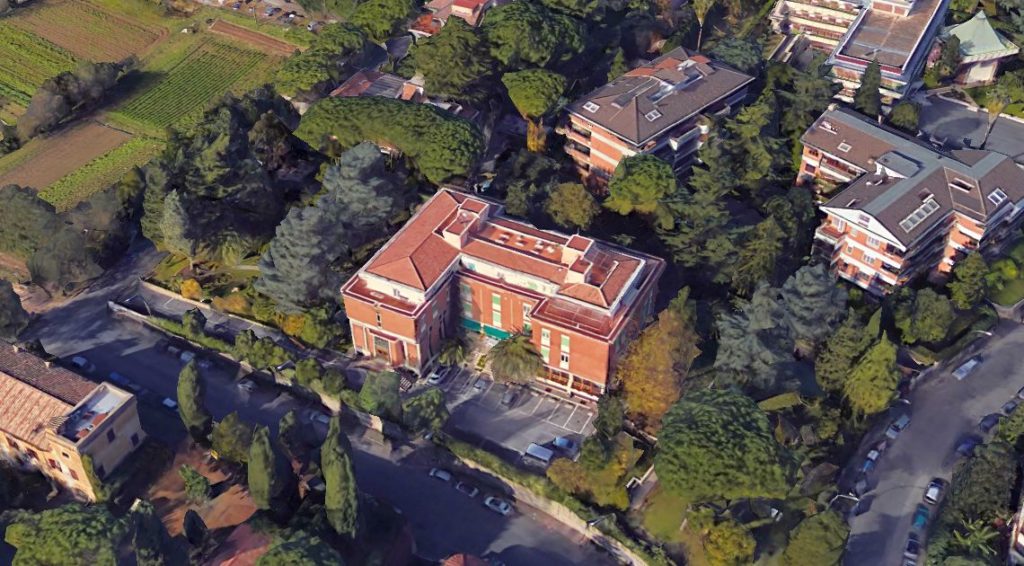
The Szent István House today / Source: pannonpilgrim.hu
It is not enough that a pilgrim's house was built next to the Stefanino, but it was all surrounded by a high stone wall - on the instructions of King St. István - thus ensuring a "little Hungary" of its own for the visitors.
The church was joined by an inverted L-shaped building, in which the cells (rooms providing accommodation) were lined up, where visitors could enter from a long corridor decorated with colonnades.
However, in 1776, due to the reconstruction and expansion of St. Peter's Basilica, VI. It was all demolished on the orders of Pope Paul. However, in 1547, when Michelangelo created the facade of the basilica and the design of its uniquely monumental dome, the Hungarian pilgrim's house was still standing. It was still standing when Bernini's columns were removed, and even in 1557, when a description of the old buildings was made (by the engineer Tiberio Alfarano), but after the construction of the sacristy of St. Peter's Basilica began in 1776, the "Stefanino" and the fate of an ancient Hungarian pilgrimage house was sealed. The Basilica outgrew its surroundings, so our pilgrimage house also had to be demolished.
Today, only seven columns remain from the colonnade of the church of the Hungarian Pilgrim's House, which can be seen in the sacristy of the basilica. The former pilgrimage house is thus reminded of the seven columns and the two marble tablets, one of which can be seen on the outer wall of the sacristy and the other on the wall of the inner corridor.
On the wall of this corridor, we can read the following text:
HEIC EXSTABAT FERE AB ANNO MXXX. VSQVE AD ANNUM MDCCLXXVI. HOSPITIUM QVOD
SAINT STEPHANUS PRIMVS REX HUNGARIAE CVRAVIT AEDIFICANDVM
PRO HVNGARIS AD APOSTOLORVM PRINCIPVM LIMINA PEREGRINANTIBUS
That is: "From 1030 to 1776, the pilgrim's house, founded by St. István, the first Hungarian king, stood here..."
The value of the two buildings - the church and the pilgrim's house - was determined by the Holy See at 7,500 scudos, which it paid to the Collegium Germanicum-Hungaricum, on the condition that its interest would later cover the construction of another pilgrim's house and the costs of the Hungarian pilgrims. Unfortunately, this was not realized due to the Napoleonic wars.
TTG
Featured image: Saint István House today / Pannonpilgrim


